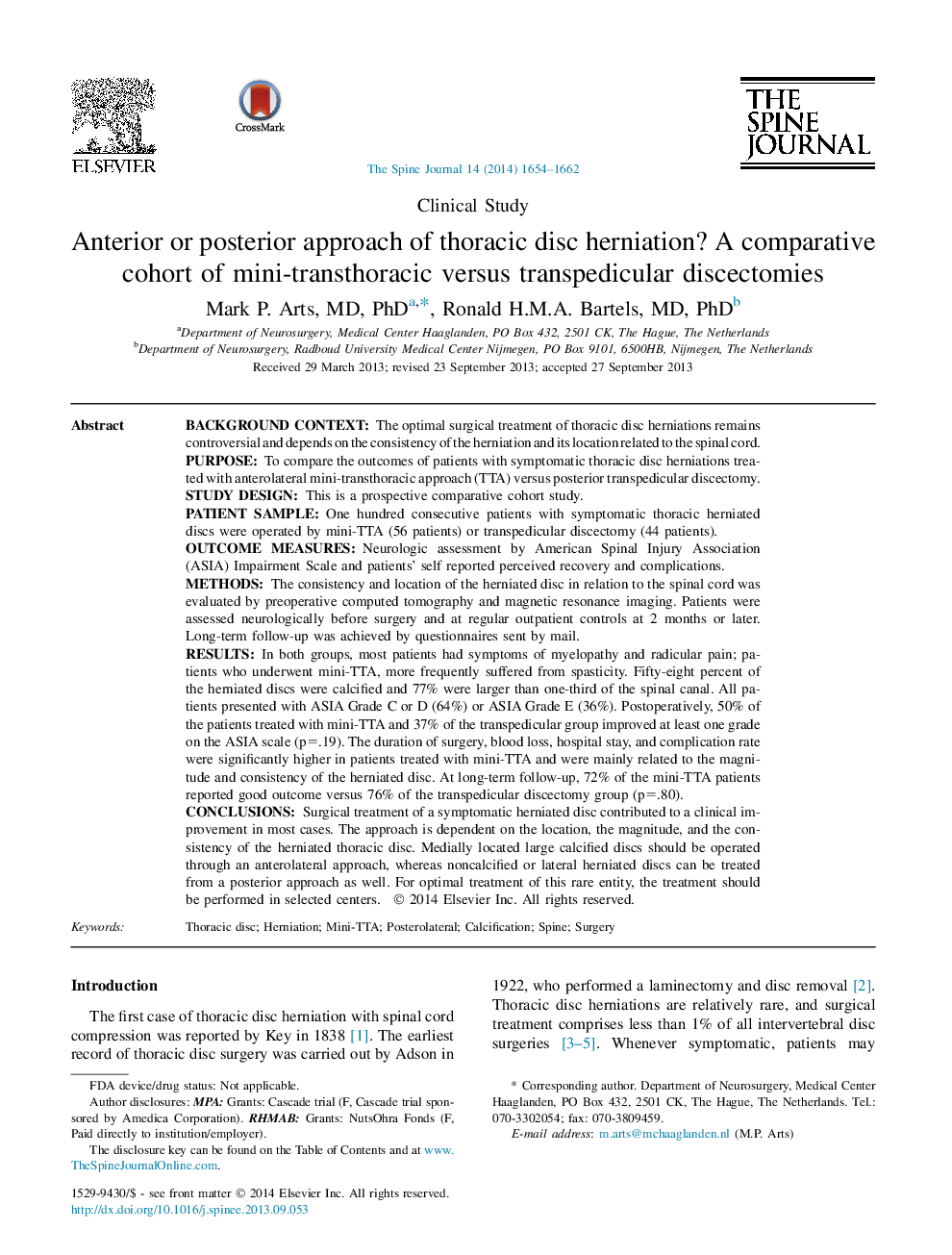| کد مقاله | کد نشریه | سال انتشار | مقاله انگلیسی | نسخه تمام متن |
|---|---|---|---|---|
| 6212225 | 1268575 | 2014 | 9 صفحه PDF | دانلود رایگان |

Background contextThe optimal surgical treatment of thoracic disc herniations remains controversial and depends on the consistency of the herniation and its location related to the spinal cord.PurposeTo compare the outcomes of patients with symptomatic thoracic disc herniations treated with anterolateral mini-transthoracic approach (TTA) versus posterior transpedicular discectomy.Study designThis is a prospective comparative cohort study.Patient sampleOne hundred consecutive patients with symptomatic thoracic herniated discs were operated by mini-TTA (56 patients) or transpedicular discectomy (44 patients).Outcome measuresNeurologic assessment by American Spinal Injury Association (ASIA) Impairment Scale and patients' self reported perceived recovery and complications.MethodsThe consistency and location of the herniated disc in relation to the spinal cord was evaluated by preoperative computed tomography and magnetic resonance imaging. Patients were assessed neurologically before surgery and at regular outpatient controls at 2 months or later. Long-term follow-up was achieved by questionnaires sent by mail.ResultsIn both groups, most patients had symptoms of myelopathy and radicular pain; patients who underwent mini-TTA, more frequently suffered from spasticity. Fifty-eight percent of the herniated discs were calcified and 77% were larger than one-third of the spinal canal. All patients presented with ASIA Grade C or D (64%) or ASIA Grade E (36%). Postoperatively, 50% of the patients treated with mini-TTA and 37% of the transpedicular group improved at least one grade on the ASIA scale (p=.19). The duration of surgery, blood loss, hospital stay, and complication rate were significantly higher in patients treated with mini-TTA and were mainly related to the magnitude and consistency of the herniated disc. At long-term follow-up, 72% of the mini-TTA patients reported good outcome versus 76% of the transpedicular discectomy group (p=.80).ConclusionsSurgical treatment of a symptomatic herniated disc contributed to a clinical improvement in most cases. The approach is dependent on the location, the magnitude, and the consistency of the herniated thoracic disc. Medially located large calcified discs should be operated through an anterolateral approach, whereas noncalcified or lateral herniated discs can be treated from a posterior approach as well. For optimal treatment of this rare entity, the treatment should be performed in selected centers.
Journal: The Spine Journal - Volume 14, Issue 8, 1 August 2014, Pages 1654-1662